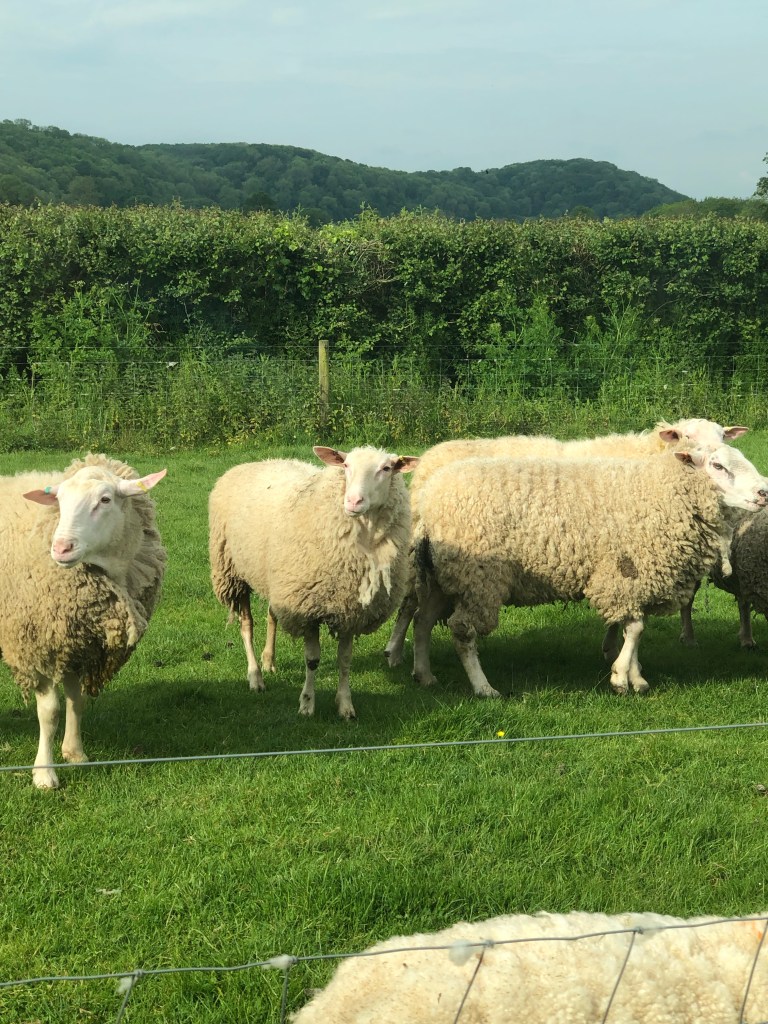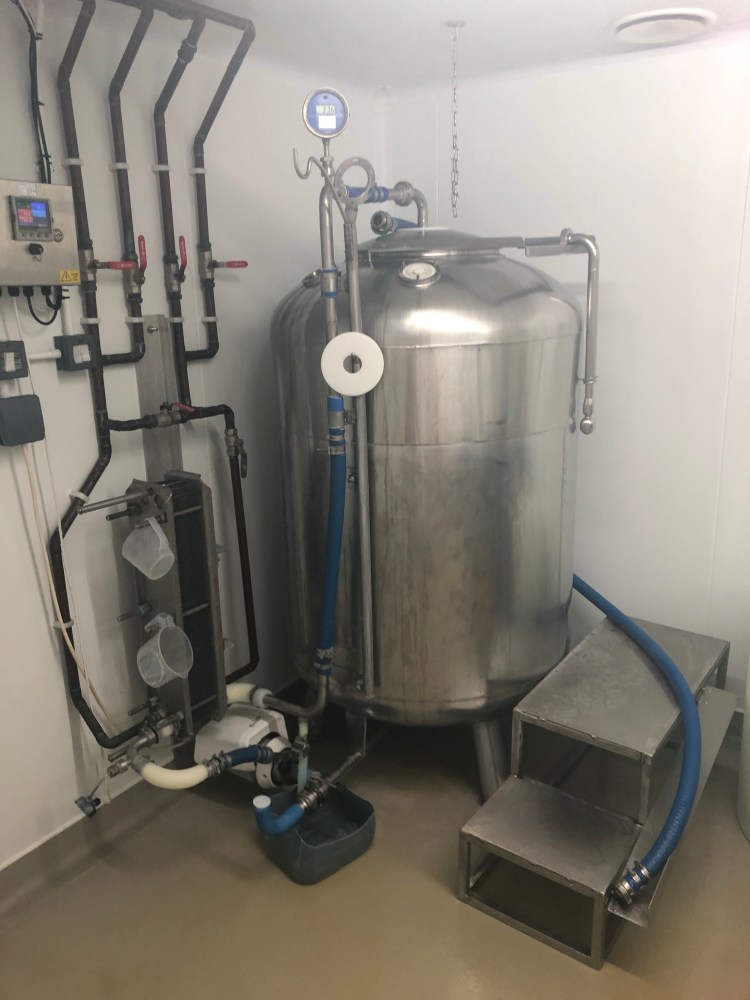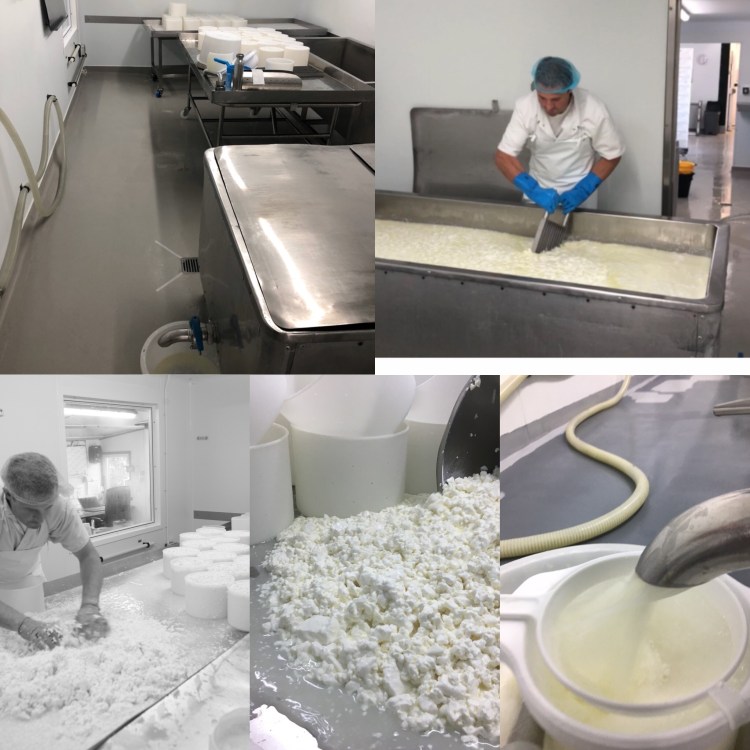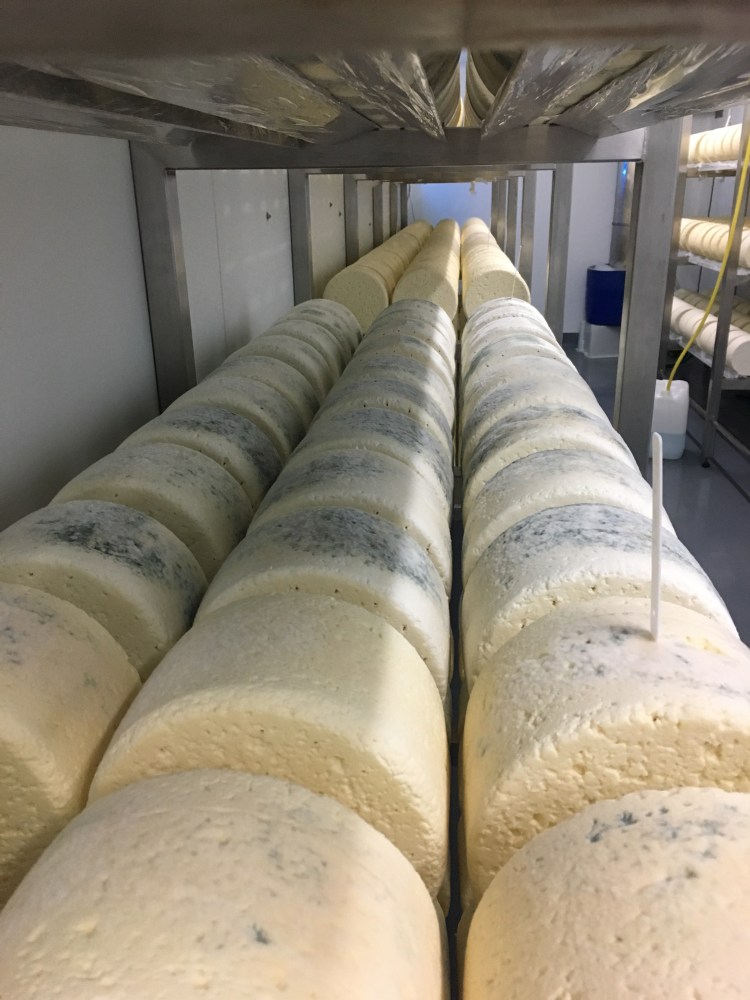
https://dartsfarm.co.uk/events

Bronwen Percival is technical manager and cheese buyer for Neal’s Yard Dairy. Ben Harris is head cheesemaker at Ticklemore Cheese Dairy, makers of a fine selection of blue cheeses which Neal’s Yard Dairy has been buying for almost 30 years.
— Read on www.nealsyarddairy.co.uk/blogs/news/how-we-slice-it
Yesterday I was off looking at a new Goat’s milk supplier. Our current source, Parsonage Farm on the Dartington Estate is ceasing their milk production, so we require a new supply for our Harbourne Blue. I went to look at a small farm in Somerset, that have been milking Goat’s for over 20 years.

The journey from milk to cheese at Ticklemore Cheese Dairy
With our Sheep and Goats’ milk we collect straight from the farms. This gives us a great working relationship with the farmers, keeps us informed and gets us out and about a little. Although we do not have this connection with our Cows’ milk farms as we buy from a co-operative, we are ensured of the quality and welfare through their regular farm visits and the Red Tractor approval on all the farms that they collect from.
The picture on the right is the sheep out grazing on pasture at Burton Dairy Farm, which is run by Tom and Helen Garland. It’s great that you get to see them along the drive when collecting milk. They go out and graze as long as the weather is not too bad.


Then it’s back to the dairy. Depending on what day it is and the schedule, the milk is either processed straight away, or kept overnight in our bulk tank.
Following this, the milk is pumped into the pastueriser. We have pasteurised here for many years now for multiple reasons, including TB in our area and to give ourselves the reassurance to make a semi-soft blue cheese with bought in milk. We have always used a low temperature long hold method of pasteurisation , that we believe damages milk the least, as the holding temperature is much less than modern high temperature pasteurisation.
Once the milk is ready we cool it in preparation to go next-door into our vats.
The milk is in the vats in our making room, starter is added, then soon it will be ready to be renneted. Once the rennet has been added, it will be left for a while, before being cut and stirred.
Displayed here is our making room, here is what the pictures represent going clockwise from the top left: our making room, second cut to the curd, pitching off the whey, curd on the table, and finally the curd being scrunched.
The cheeses are turned several times and stay in this room overnight, then they are moved to our Salting room.


The Cheeses are wheeled into our salting room on dollies, they spend the next 6 days in here. We do what is know as dry salting, in that we rub salt all over the cheese on multiple occasions. On their last day in the salting room, the cheeses are spiked to allow oxygen inside to allow the blue mould to grow. Once they are spiked they make their way into our cave that you can see on the left.
unfortunately, Our cave is not as spectacular as it sounds! No Bats or rocks, just a simulation to give us a high humidity atmosphere with a steady 9-10 degrees Celsius.
The cheeses stay in our cave for around 3 weeks. They are ironed and when they are lovely and blue, they are transferred to our maturing fridge. They stay here until they are at least 3 months old, normally longer. This depends on the time of year and taste profile. Once they are deemed ready, they are scraped and wrapped in our gold foil.
View this post on InstagramA post shared by Darts Farm (@dartsfarm) on
We are off to a flying start with our 2020 Beenleigh. Our first milk collection before the New Year on 29th December. We plan on making a similar amount to last year, that should see us predominantly making from now until the end of June. Its good to start early though and the milk seems ace, with a lovely rich sweetness. Hopefully we’ll be able to steer this lovely milk in the right direction to make some great Beenleigh Blue this year.
